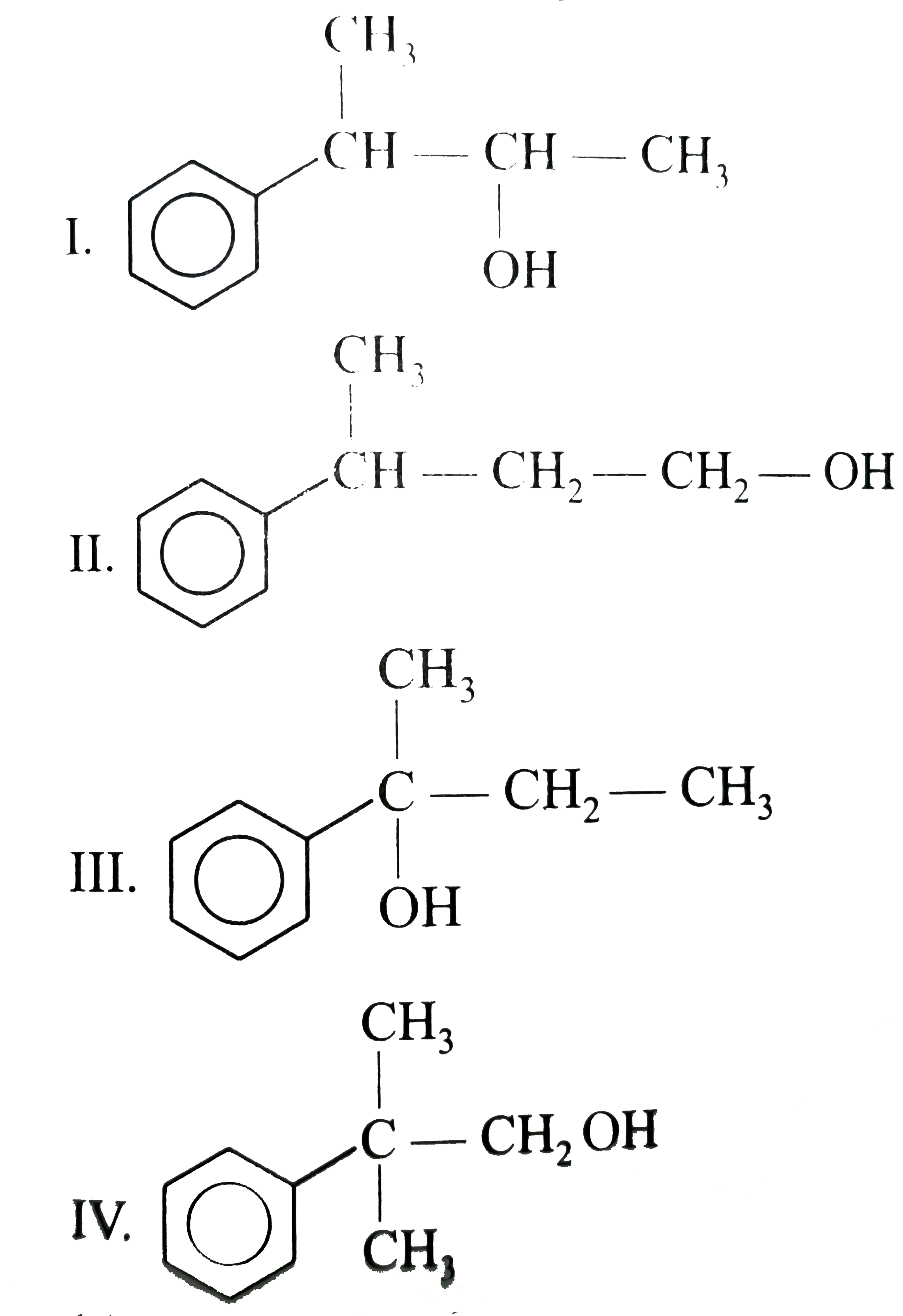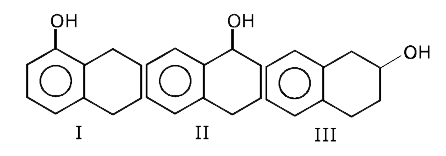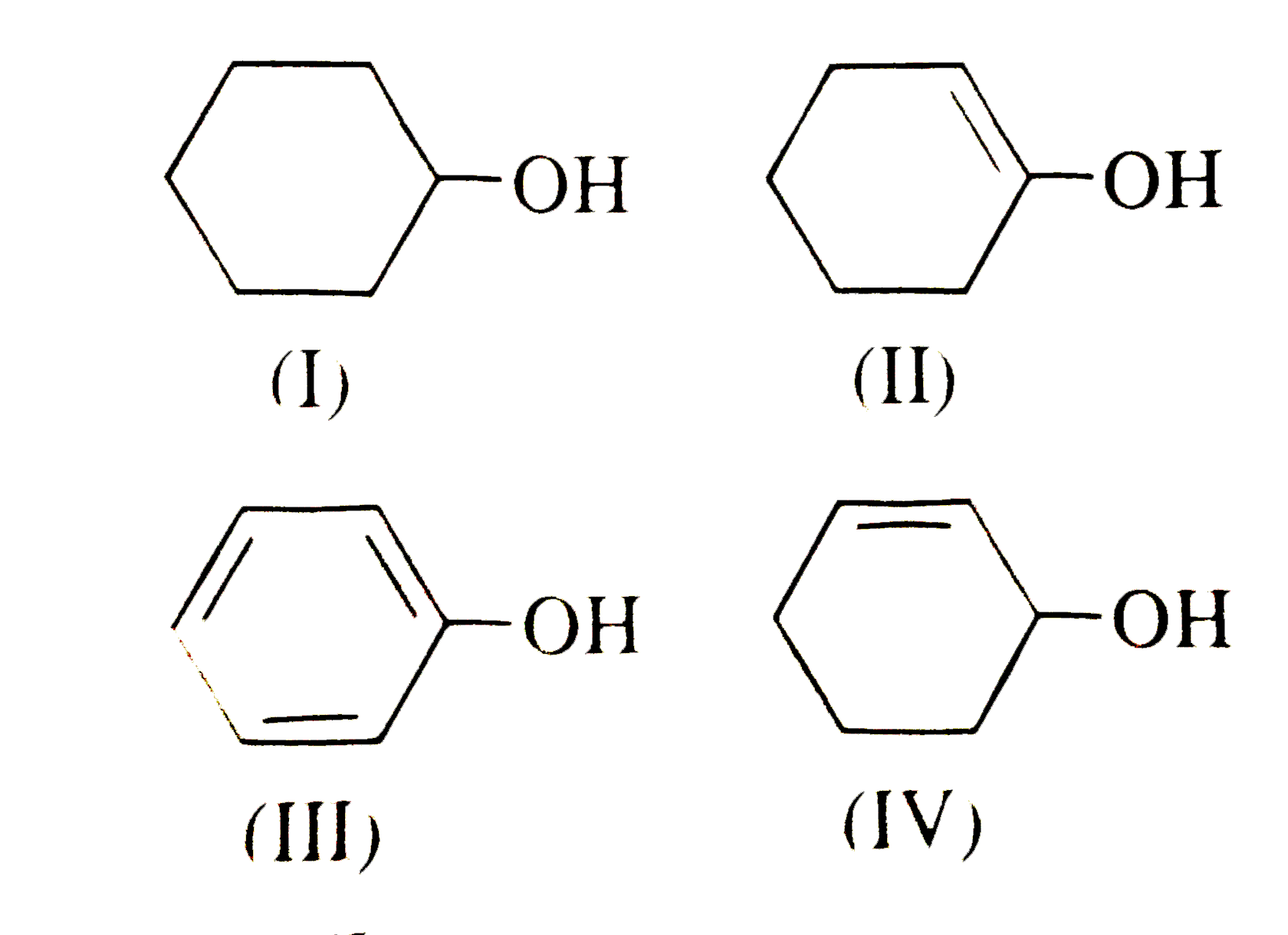The relative rate of acid catalysed dehydration of following alcohols would be
I. 
II. 
III. 
IV. 
III gt I gt IV gt II
III gt IV gt I gt II
I gt III gt IV gt II
IV gt III gt I gt II
The correct Answer is:D
Step by step video, text & image solution for The relative rate of acid catalysed dehydration of following alcohols would be I. II. III. IV. by Chemistry experts to help you in doubts & scoring excellent marks in Class 11 exams.
Updated on:21/07/2023Topper's Solved these Questions
- ORGANIC REACTION MECHANISMS-IVBook:RESONANCEChapter:ORGANIC REACTION MECHANISMS-IVExercise:Exercise-2 Part-2
Explore 7 Videos
- ORGANIC REACTION MECHANISMS-IVBook:RESONANCEChapter:ORGANIC REACTION MECHANISMS-IVExercise:Exercise-2 Part-3
Explore 10 Videos
- ORGANIC REACTION MECHANISMS-IVBook:RESONANCEChapter:ORGANIC REACTION MECHANISMS-IVExercise:Exercise-1 Part-3
Explore 2 Videos
- ORGANIC REACTION MECHANISMS - IIBook:RESONANCEChapter:ORGANIC REACTION MECHANISMS - IIExercise:APSP Part - 3
Explore 22 Videos
- PERIODIC TABLE & PERIODICITYBook:RESONANCEChapter:PERIODIC TABLE & PERIODICITYExercise:Inorganic chemistry (Periodic Table & Periodicity
Explore 61 Videos
Similar Questions
Knowledge Check
Compare the rate of acid catalyst dehydration
 AI>II>IIIBII>III>ICIII>II>IDII>I>III
AI>II>IIIBII>III>ICIII>II>IDII>I>IIIThe correct order of acid catalysed dehydration of alcohols is:
A1∘>2∘>3∘B3∘>2∘>1∘C2∘>1∘>3∘D1∘>3∘>2∘Acid catalysed dehydration of 2-pentanol would give
A1-pentene as a major productBcis 2-pentene as a major productCtrans-2-pentene as a major productDcis- and trans - 2-pentene in equal amount.
The relative ease of dehydration of alcohols follows following order :
View SolutionThe intermediate species involved in the acid catalysed dehydration of alcohol is
View SolutionWhich is maximum reactive towords acid catalysed dehydration :
View SolutionWhich of the following correctly represents the rate of acid-catalysed hydration of following alkenes.

(III)PhCH=CH−C2H6 , (IV)CH3−C∣CH3=CH2
View SolutionRate of dehydration of alcohols follows the order
View Solution
